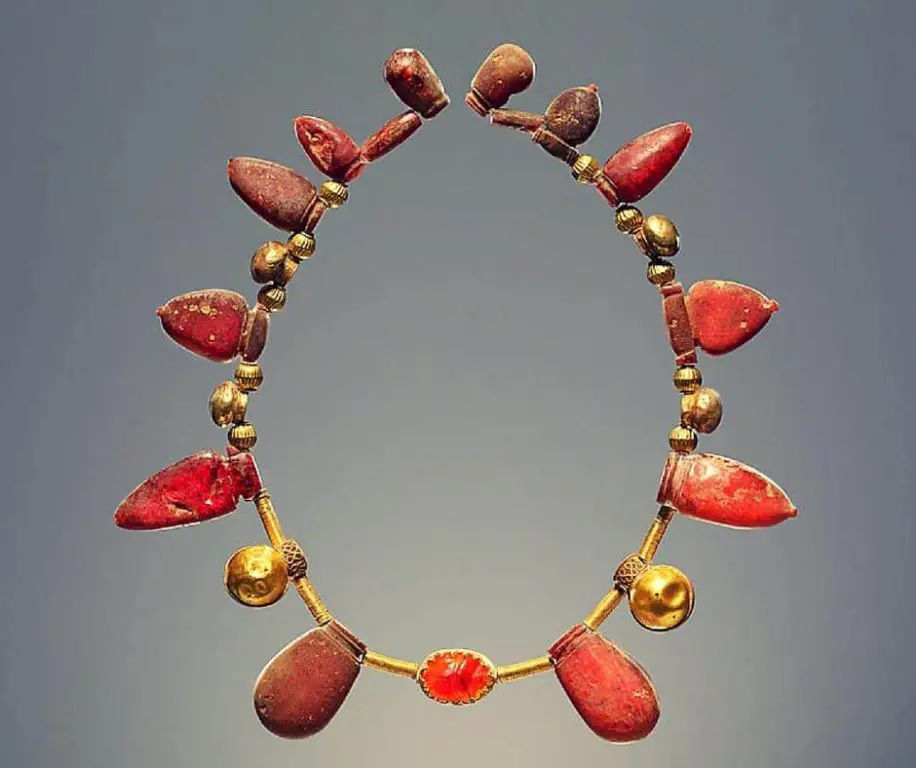Is Amber A Seductive Scent?
Introducing Amber Scents
Amber refers to a warm, sweet scent used in perfumes that can be derived from plant extracts like labdanum or from fossilized tree resin. The word “amber” comes from the Arabic word “Anbar”, meaning ambergris, which was highly prized in ancient times. Ambergris is a waxy substance produced in the intestines of sperm whales and eventually expelled into the ocean. As it floats on the ocean for years, it acquires a sweet, earthy scent. Perfumers began using the term “amber” to refer to fragrances with similar properties.
The most common types of amber used in modern perfumery include:
- Labdanum: A sticky brown resin extracted from shrubs like Cistus ladanifer. It has a musky, warm scent.
- Benzoin: A balsamic resin from the Styrax tree with vanilla undertones.
- Ambroxan: A synthetic aroma chemical that replicates ambergris notes.
- Amber crystals: Fossilized tree resin that can be burned as incense.
Amber scents are hallmarks of the Oriental fragrance family and provide depth and richness to perfume compositions. Their soft, sensual quality evokes images of Greek and Roman luxury.
The Science Behind Amber’s Allure
Amber scents are derived from the resin produced by ancient conifer trees from the Pinaceae family tens of millions of years ago. This fossilized resin, known as amber or ambergris, is prized for its warm, sweet, rich scent. When used in perfumery, amber adds depth, radiance and subtle sensuality to fragrance compositions.
The main chemical components that give amber its unique scent are labdanum, benzoin resin, styrax resin, and cistus oil. These contain aromatic molecules like terpenes and benzoic acid esters that interact with receptors in our nose and stimulate the olfactory system in the brain, creating its signature scent profile.
Interestingly, studies show that the chemistry of certain scents can have subtle effects on human attraction and mood. The warm, sweet aroma of amber in particular is known to act as a mood enhancer. When paired with underlying notes like vanilla, amber scents take on an even more sensual tone that many find alluring.
Researchers suggest this seductive effect may be due to the way amber’s scent molecules bind to receptors in the limbic system of the brain, which influences emotional and sexual behavior. The overall composition, notes, and sillage of amber fragrances can thus provide a multi-sensory experience that feels comforting yet seductive at the same time (source). This unique molecular interaction makes amber a captivating and sensual base note for many perfumes.
Ancient Associations with Amber
Amber has long been associated with love, fertility, and seduction in ancient cultures. According to Greek mythology, amber was formed from the tears of the sisters Heliades, who wept when their brother Phaethon died (Cartwright, 2022). The Ancient Greeks also believed amber to be the solidified setting rays of the sun. Amber was sacred to Apollo, the Greek god of light, healing, music, poetry and prophecy. Temples to Apollo often contained amber decorations. The Greek philosopher Nicias believed amber was formed from congealed droplets of sunset over the sea.
In Roman myths, amber was connected to the goddess Venus due to its luminous golden color. Pliny the Elder, the Roman author and naturalist, referred to amber’s reputed aphrodisiac powers by calling it “succinum” meaning juice or sap. Romans would scent their couches and beds with amber before lovemaking. Amber jewelry was thought to excite desire.

Across northern Europe, amber was associated with Freya, the Norse goddess of love, sexuality, war, and death. Baltic legends proclaimed amber came from the tears of Jurate, the goddess of the sea. Amber washed up after she cried when she had to leave her mortal lover Kastytis each night and return to the bottom of the sea. The occult powers of amber made it a popular material for amulets and charms worn for protection and good luck (Gems Society, 2022).
Amber in Modern Perfumery
Amber has long been a popular note in perfumery for its warm, sweet, slightly powdery scent. Many iconic perfumes feature amber to create sensual, luxurious fragrances. Amber accords are created using combinations of vanilla, benzoin resin, labdanum, tonka bean, and more to emulate the scent of true ambergris. When used in perfumes, amber adds depth, sensuality and richness.
Some of the most popular amber perfumes for women include Van Cleef & Arpels Ambre Imperial, Tom Ford Black Orchid, Dior Hypnotic Poison, and Prada Candy. These feature dominant amber notes blended with spices, woods, vanilla and florals. For men, amber is often paired with tobacco, woods and citrus as seen in fragrances like Dior Higher Energy, Valentino Uomo Noir Absolu, and Zaro by Zaro Davidoff.
Modern perfumers continue to innovate with amber accords to capture sensuality in a bottle. Its warm, sweet aroma provides an intimate allure and timeless sophistication to perfumes for both men and women.
The Psychology of Scent
Scents and fragrances can have a powerful effect on our psychology and perceptions. Studies have shown that certain scents can evoke strong emotional responses, influence moods, and even play a role in attraction between people. The psychological effects of scent stem from the close link between our olfactory system and the limbic system, the part of the brain that regulates emotion and memory. When we smell something, those odor molecules send signals directly to the limbic system, triggering emotional and physiological responses before we’re even consciously aware of the scent (Psychology Today, 2022).
Research has demonstrated some consistent psychological effects of certain scent categories. For example, lavender and other floral scents tend to promote feelings of relaxation and lift moods. Citrus and peppermint scents can energize people and improve focus and alertness. Warm, sweet scents like vanilla may spark nostalgia and comfort. Foul odors can provoke disgust and negative emotions. Smells also play a role in attraction between people. We respond to pheromones indicating genetic compatibility with a potential mate. Scents can also signal vitality – for instance, the scent of someone with a strong immune system is more appealing (Spence, 2021).
Overall, psychology shows smell can subtly but profoundly influence our emotions, memories, moods, perceptions, and even social connections with others. This helps explain why scents like amber have long been believed to have alluring effects.
Amber’s Reputation as an Aphrodisiac
Throughout history, amber has been thought to possess alluring, sensual properties. Many ancient cultures believed that amber had aphrodisiac effects due to its warm, rich scent. Amber essential oil has been called “the sacred oil of sexuality and sensuality” (source). According to legends, amber scents were used by courtesans and harem girls to seduce and arouse their lovers.
This reputation continues today, with many modern perfumers marketing amber-based fragrances as sensual and alluring. The fragrance company Demeter calls amber “an aphrodisiac with mystical powers,” with a “warm, rich, honey-like” scent (source). The sweet, musky aroma of amber strikes a primal chord and is inherently associated with warmth, comfort and intimacy.
While there is no scientific evidence proving amber’s aphrodisiac effects, its long-standing reputation as a sensual scent persists. The seductive mystique surrounding amber continues to capture the popular imagination and fuel its use in romantic, erotic contexts.
Cultural Perceptions of Amber
Amber has long been viewed as a sensual, spiritual, and healing gemstone across many cultures. In ancient Greece, amber was associated with love and desire, believed to arouse passion in those who wore it (https://www.romadesignerjewelry.com/blogs/education/amber-symbolism-what-does-the-gemstone-represent). Greek myth linked amber to the tears of sisters Heliades, who were turned into poplar trees and wept when their brother Phaeton died.
Across northern Europe, amber was believed to contain magical powers and connection to the sun. In Norse mythology, when the god Freyr wept for his absent wife Gerd, his tears turned into gold in the sea (https://www.gemsociety.org/article/history-legend-amber-gems-yore/). Baltic peoples viewed amber as the setting sun solidified into gemstone.
In Asia, amber symbolized courage, wisdom and strength. Chinese tradition held that amber could purify mind and spirit when burned as incense. Amber also played a role in Ayurvedic medicine in India for its healing energies. Throughout history and across cultures, amber has maintained an allure as a warm, sensual, and spiritual gemstone.
Amber in Literature and Art
Amber has had a longstanding presence in art and literature due to its mystical allure. In ancient Greek mythology, amber was seen as the tears of mourning sisters Phaethon and Heliades who were turned into poplar trees. Their tears hardened into amber drops that fell into the river Eridanus (Getty Publications). This mythological association imbued amber with symbolism of mourning, regret and the passage of time.
Amber pendants were found in the tomb of Tutankhamun, indicating the material held symbolic significance in ancient Egypt as well. In Elizabethan England, amber was seen as an indicator of rank and pedigree when incorporated into portrait pendants of noblewomen (Culture.pl). Across eras and cultures, amber has carried connotations of beauty, rarity and mystique.
In literature, amber is evoked poetically to represent moments frozen in time. John Donne’s poem “The Baite” depicts his lover’s tear frozen into an amber bead, immortalizing her moment of heartbreak. In Leo Tolstoy’s “War and Peace,” the Amber Room represents the splendor of a bygone era. From poetry to novels, amber resonates metaphorically across genres.
Overall, representations of amber in art and literature reveal its enduring symbolic potency as a material imbued with beauty, rarity, sentimentality and the suspension of a moment. Its unique translucent warmth has made it a compelling artistic and literary motif throughout history.
Amber Scent Associations
Amber scent is often associated with feelings of nostalgia, comfort, and warmth. Its sweet, honey-like aroma evokes memories of childhood and simpler times for many people. According to the Harlem Candle Company, amber’s rich scent “reminds us of the resins and balsams used since antiquity in the Middle East and Northern Africa” (source). This gives it an exotic, mystical quality that transports the mind to faraway places and ancient rituals.
Amber is also linked to feelings of romance and seduction. As Pura notes, its musky, sensual undertones have earned it a reputation as an aphrodisiac (source). Cleopatra reputedly perfumed the sails of her barge with amber before meeting Marc Antony, knowing its power to arouse desire. Today, amber remains a popular scent in perfumes marketed to evoke passion and attraction.
Overall, amber scent creates a warm, nostalgic, and subtly erotic impression. It brings to mind comforts of the past as well as forbidden pleasures. This mix of familiarity and exoticism is what makes amber so mysteriously alluring.
Conclusion
Amber’s reputation as a sensual and seductive scent has persisted for centuries, tracing back to ancient associations with fertility, love, and passion. The warm, rich scent evokes comfort and nostalgia, yet maintains an air of exoticism and mystery. While no scientific evidence proves amber is intrinsically an aphrodisiac, its unique aroma and cultural pedigree lend it an undeniable allure.
The science behind scent and psychology indicates certain smells can elicit strong emotional and physiological responses. Amber’s sweet, resinous fragrance may trigger reactions in the limbic system of the brain, eliciting feelings of pleasure, attraction, and nostalgia. Its long history intertwined with art, literature and mythology have imbued amber with sensual overtones across cultures and eras.
In summary, amber’s sensual reputation merits further study. While definitive evidence may remain elusive, the enduring mystique around amber as an aphrodisiac speaks to its sultry, exotic appeal. Carefully crafted amber scents continue to seduce and intrigue perfumery aficionados today as they have for millennia. The notion that amber’s rich, warm essence possesses a subtle erotic power persists, keeping its mythic aura alive.





